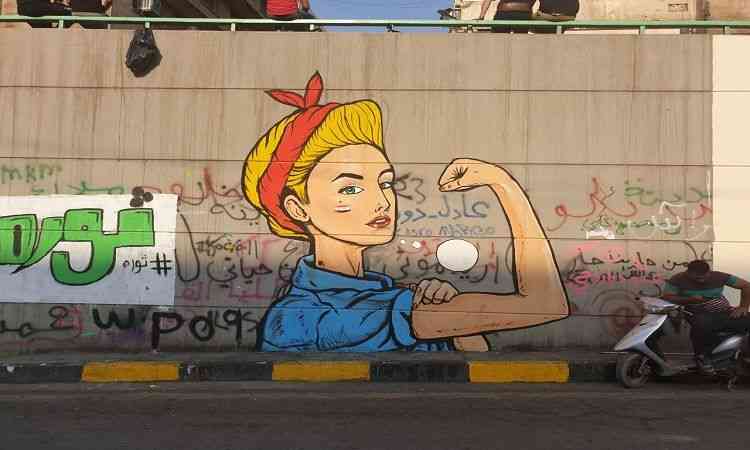Art or arts is a language that a person uses to translate the expressions that are essential in himself and not an expression of a person’s need for the requirements of his life, although some scholars consider art as a life necessity for a person, such as water and food.


There are visual arts: painting, sculpture, decoration, ceramics, fabric, and cooking.
Expressive arts: we find it in music, dance, drama, writing for stories and their narration.
The word art has been defined to denote the skills used to produce things that carry aesthetic value on a tariff. Among the definitions is that art is a skill - craft - experience - creativity - intuition - simulation.


Definition and evaluation of art has become a special problem since the early twentieth century by Richard and their parentage .. It distinguishes three approaches: Realism, where aesthetic quality is an absolute value independent of any human opinion Objectivity, since it is also an absolute value, but depends on the human experience in general Relativity, which is not of absolute value, is the philosophical approach that says there is no absolute truth.


= The concept romantic tradition in the history of art, where the field of arts was classified according to the humanities.
The Nature of Art :-
"One of the most elusive of the traditional problems of human culture." It has been defined as a medium of expression and communication of emotions and ideas, a means of exploring and appreciating the formal elements of their own interest, and on environmental disguise or acting.
Leo Tolstoy who defined art as an indirect means of communication from one person to another.
The roots of art theory were rooted in the philosophy of Emmanuel Kant, developed in the early twentieth century by Roger Fry and Clive Bell. Art, environmental disguise or acting have deep roots in Aristotle's philosophy.
Currently the word art is used to denote creative works that are subject to common sense, such as art of dance, music, singing, writing or composing and composing, which is an expression of creative talent. Man began practicing art 30 thousand years ago, and the drawings consisted of animal figures and symbolic abstract marks above the walls of the caves, and these works are considered to be art from the Paleothic era.
For thousands of years, humans used to be adorned with jewelry, jewelry, and dyes. In most of the major ancient societies, the identity of the individual was known through expressive artistic forms that denote it, as in the models of his clothes, styles, body decoration, decorating, and dance habits. Or from the festive or indicative collective symbolism that was represented in the Totem (article), which indicates his tribe or clan. Totem was decorated with inscription to tell the story of his predecessors or their history. In small societies, the arts represented their life or culture.
Celebrations and dances were the expression of their ancestors and their myths about creation or sermons and educational lessons. Many peoples used art as a means of obtaining help from the spiritual world in their lives. In the great societies, the rulers hired the artists to perform works that serve their political construction as in the Inca countries, as the upper class was accepting the clothes, jewelry and metalwork of their decorations during the 15th-16th centuries AD, indicating their social status. While the lower class wear coarse and tattered clothing. Currently, we find that arts are used in major societies for a commercial, political, ideological or commercial purpose and are subject to intellectual protection.

And "Will and Ariel Durant" provide us with his analysis and vision of the beginnings of the arts and their emergence in the first part of his book "The Story of Civilization", through the theories of many philosophers and researchers gathered in his unified private vision in the following way: [And we can say that about dancing, music playing originated on Instruments, as the play arose, music playing - apparently - arose from the desire of a man to sign the dance as a sign of it, which was determined by and accompanied by strengthening voices .
The instruments of play were limited in scope and performance, but in terms of species, they almost did not fall under the inventory ... made from animal horns, skins and shells Ivory, and copper and bamboo Wood. Then people decorated these machines with accurate colors and patterns ... Professional singers arose among the tribes, as did professional dancers. The musical scale developed in obscurity and diminishment, until it is what it is now. It is music, singing and dancing combined.
Creating our "savage" theater and opera. This is because primitive dancing was often specialized in simulation, as it simulated the movements of animals and humans ... Then I moved to a performance that simulated actions and accidents ... Without these “savages” and what they spent in a hundred thousand years experimenting and sensing what was written for civilization to rise We owe them almost everything ...]
Types of Art :-
There are many types of art, some of which are still in history, and some of which have emerged recently. Today there are fine arts such as photography, sculpture, engraving, architecture, interior design and drawing, the most prominent of which. There are arts such as music, literature, poetry, dance and theater. Cinema, animation, image art and art development came to the theater, so to speak, a gelatinous thing that changes due to views, sometimes to culture, and sometimes to eras. We can rely on the classification of "Etienne Surio", which divided the arts into seven general arts, each containing a graduated group of arts within various names, to offer us the seven arts being the most comprehensive and widely used classification, for cinema to become the seventh art.
-EnRi


